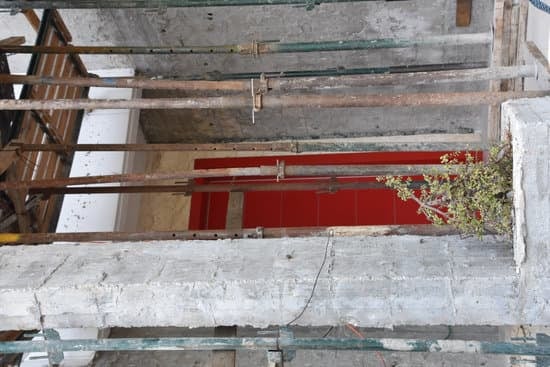Homeowners are often searching for ways to save money when it comes to their homes, and one avenue that should not be overlooked is tax deductions for home improvements. Understanding which home improvements are tax deductible can help homeowners maximize their savings while making necessary upgrades. In this article, we will provide an overview of tax deductible home improvements, discussing the different categories and specific examples of improvements that qualify.
Knowing which home improvements qualify for tax deductions is crucial for homeowners looking to make cost-effective upgrades. Tax deductible home improvements refer to those that can be deducted from your taxable income, reducing the overall amount you owe in taxes. From energy-efficient upgrades to modifications for medical reasons or accessibility, there are various categories of home improvements that may qualify for these deductions.
In this comprehensive guide, we will explore the primary residence improvements that are eligible for tax deductions. Additionally, we will discuss energy-efficient home improvements and how they not only contribute to a greener environment but also provide substantial tax savings. Home office deductions will also be addressed, providing homeowners with guidelines on how to claim these deductions properly.
Moreover, we will delve into medical home improvements and their potential eligibility for tax deductions. For those who own rental properties, we will explain the specific tax deductions available for improving rental properties and how they differ from primary residence improvements. Lastly, we will explore accessible modifications that cater to disabled individuals and seniors, highlighting examples of modifications that improve accessibility and are eligible for tax deductions.
By understanding which types of home improvements are tax deductible, homeowners can take advantage of potential savings while making necessary upgrades or renovations. It is important to keep accurate records and documentation throughout the process to ensure smooth filing during tax season. In the following sections of this article, we will dive deeper into each category of deductible home improvement and provide helpful tips on maximizing your tax savings through smart choices in upgrading your home.
Overview of Tax Deductible Home Improvements
Tax deductible home improvements refer to renovations or upgrades made to a primary residence that qualify for tax deductions. It is important for homeowners to understand which improvements are eligible in order to take advantage of potential tax savings. This section will provide an overview of tax deductible home improvements and emphasize the significance of knowing which improvements qualify for tax deductions.
Tax deductible home improvements can include a wide range of projects, such as energy-efficient upgrades, improvements to a home office, medical-related modifications, accessibility enhancements, and renovations made to rental properties. These deductions can help offset the costs of improving and maintaining a home while reducing the overall tax burden.
Understanding which improvements qualify for tax deductions is crucial as it allows homeowners to maximize their savings. By taking advantage of these deductions, homeowners can increase their chances of receiving a larger tax refund or reducing their taxable income. Therefore, homeowners should familiarize themselves with the specific guidelines and requirements set by the Internal Revenue Service (IRS) in order to ensure they are eligible for these tax benefits.
In recent years, there has been an increasing emphasis on energy-efficient home improvements due to their environmental benefits and potential for significant cost savings. The IRS offers various tax incentives for energy-efficient upgrades such as installing solar panels, adding insulation, or upgrading heating and cooling systems.
These deductions not only help homeowners save money on utility bills but also contribute towards building sustainable communities. Additionally, eligible energy-efficient improvements may qualify for federal tax credits, further enhancing potential savings.
Overall, understanding the types of home improvements that are tax deductible is essential for homeowners seeking to maximize their savings on both renovation costs and taxes. By staying informed about the various categories of deductible home improvements and meeting all necessary criteria outlined by the IRS, individuals can ensure they receive the appropriate deductions when filing their taxes.
Taking advantage of these deductions not only provides financial benefits but also encourages homeowners to invest in environmentally-friendly upgrades that enhance the overall value of their property.
| Type of Home Improvement | Examples |
|---|---|
| Primary Residence Improvements | Adding a new bathroom, installing a security system, or replacing the roof. |
| Energy-Efficient Home Improvements | Installing solar panels, upgrading to energy-efficient windows, or adding insulation. |
| Home Office Deduction | Building a separate workspace, installing dedicated phone lines, or upgrading technology equipment for business use. |
Primary Residence Improvements
Explanation:
When it comes to tax deductible home improvements, there are certain improvements made to the primary residence that may qualify for tax deductions. These improvements can include both renovations and repairs that enhance the value or extend the life of the property.
One common example of a primary residence improvement that qualifies for a tax deduction is energy-efficient upgrades. These types of improvements not only help homeowners save on their energy bills but also contribute to a greener, more sustainable environment. Energy-efficient improvements such as installing solar panels, upgrading insulation, or replacing old windows and doors can be eligible for tax deductions under various federal and state programs.
Additionally, certain home office improvements can also be tax deductible if they are necessary for conducting business operations. For instance, if you use a dedicated room in your home as your principal place of business, you may be able to deduct expenses related to that space’s maintenance and renovation. However, it’s important to note that the guidelines and requirements for claiming home office deductions are specific and should be carefully followed to ensure eligibility.
In order to maximize your tax savings with primary residence improvements, it is essential to keep thorough records and documentation of all relevant expenses. This includes invoices, receipts, contracts, and any other supporting documents that demonstrate the cost and nature of the improvement. Maintaining organized records will not only simplify the process of claiming deductions but also serve as proof in case of an audit.
It is advisable for homeowners considering making improvements to consult with a qualified tax professional who can provide guidance on which specific home improvements qualify for tax deductions based on individual circumstances and applicable tax laws. By taking advantage of these deductions, homeowners can reap potential financial benefits while simultaneously improving their living spaces.
| Type of Improvement | Examples |
|---|---|
| Energy-Efficient Improvements | Solar panel installation, insulation upgrades, window and door replacements |
| Home Office Improvements | Dedicated office space renovations, maintenance expenses |
Energy-Efficient Home Improvements
What are energy-efficient home improvements?
Energy-efficient home improvements encompass a wide range of upgrades that are designed to reduce energy consumption and lower utility costs. These improvements focus on enhancing the energy efficiency of various aspects of a home, such as heating and cooling systems, insulation, windows, and appliances. By making these upgrades, homeowners can not only save money on their energy bills but also contribute to reducing their carbon footprint.
Benefits of energy-efficient upgrades
Investing in energy-efficient home improvements offers several benefits beyond just reducing energy consumption. One significant advantage is the potential for tax savings. Energy-efficient improvements may qualify for tax deductions or credits under federal or state programs, allowing homeowners to recoup a portion of their investment through tax incentives.
Another benefit is increased comfort within the home. Enhancements such as weather stripping, insulation upgrades, and high-efficiency HVAC systems can help maintain a consistently comfortable temperature year-round. Additionally, energy-efficient improvements can increase the value of a property. Potential buyers are often willing to pay more for homes with sustainable features that offer long-term cost savings.
Tax incentives for energy-efficient home improvements
To encourage homeowners to make energy-efficient upgrades, government entities provide tax incentives in the form of deductions or credits. The specific incentives available depend on various factors like location and the type of improvement made.
For instance, homeowners who install solar panels or wind turbines may be eligible for a Residential Renewable Energy Tax Credit offered by the federal government. This credit allows taxpayers to claim up to 26% of the qualified expenses incurred for installing renewable energy systems.
Similarly, certain states offer their own incentives for energy-efficient upgrades. California’s Property Assessed Clean Energy (PACE) program provides financing options for homeowners looking to make eco-friendly improvements by allowing them to repay the cost through an assessment on their property taxes.
It is important for homeowners to research and understand the available tax incentives in their area before making energy-efficient upgrades. By taking advantage of these programs, homeowners can not only enjoy a greener and more energy-efficient home but also maximize their tax savings.
Home Office Deduction
The home office deduction is a valuable tax benefit for individuals who use part of their home exclusively for business purposes. It allows you to deduct certain expenses related to your home office, such as utilities, rent or mortgage interest, and even depreciation. However, it’s important to note that not all home office improvements are automatically tax deductible.
To qualify for the home office deduction, your home office must be used regularly and exclusively for business purposes. This means that it should be a dedicated space used solely for your work or business activities. Whether you’re self-employed or an employee working from home, the same requirements apply.
There are specific guidelines and requirements for claiming the home office deduction. For example, the space must be your principal place of business or where you meet clients or customers on a regular basis. Additionally, you must use the space exclusively and regularly for work-related activities. Keep in mind that if you also use the space for personal purposes, such as a guest bedroom or storage area, it may disqualify you from taking the deduction.
When it comes to eligible improvements for the home office deduction, they typically fall into two categories: direct expenses and indirect expenses. Direct expenses are costs associated solely with your home office, such as painting or repairs done specifically in that area. Indirect expenses cover things like utilities and homeowner’s insurance which you can prorate based on the percentage of your home used as a workspace.
To qualify these improvements as tax deductible, it’s important to maintain proper records and documentation. Keep receipts and invoices showing the cost of any improvements made to your home office space. Additionally, keep records showing how much time you spend using your workspace for business purposes versus personal use.
Taking advantage of the home office deduction can lead to substantial tax savings while helping improve your overall work environment. It is recommended consulting with a tax professional or reviewing IRS guidelines before claiming this deduction to ensure compliance with regulations and maximize your potential tax savings.
Medical Home Improvements
Medical-related home improvements can potentially be tax deductible. These are modifications made to a primary residence that are necessary for medical purposes. It is important to understand what qualifies as a medical home improvement in order to take advantage of potential tax deductions.
To qualify as a medical home improvement, the modification must be directly related to an individual’s medical condition or disability. This means that the improvement must be specifically designed to accommodate their needs and improve their quality of life. Some examples of medical home improvements include installing wheelchair ramps, widening doorways for wheelchair accessibility, adding handrails or grab bars in bathrooms, and installing lifts or elevators for individuals with mobility challenges.
In order to claim a tax deduction for medical home improvements, it is essential to keep accurate records and documentation. This includes receipts, contracts, and invoices showing the cost of the improvement as well as any medical need that necessitated the modification. It is also advisable to consult with a tax professional or accountant who can provide guidance on eligibility requirements and proper documentation for claiming these deductions.
By taking advantage of tax deductions for medical home improvements, homeowners can not only improve their living conditions but also save money on their taxes. It is important to note that these deductions can only be claimed if they exceed 10% of the adjusted gross income (AGI) threshold for most taxpayers. However, if one spouse is 65 years old or older, they may qualify under a lower AGI threshold of 7.5%.
Rental Property Improvements
When it comes to tax deductible home improvements, it’s important to understand that the rules and regulations may differ for rental properties compared to primary residences. Rental property improvements refer to any renovations or upgrades made to a property that is being rented out to tenants. These improvements are considered expenses related to the rental business and can have potential tax benefits for landlords.
To qualify for tax deductions on rental property improvements, there are a few key factors to consider. Firstly, the improvement must be deemed necessary and directly related to maintaining, repairing, or improving the rental property. Examples of eligible improvements include fixing a leaky roof, upgrading an outdated heating system, or renovating a kitchen or bathroom in need of repair.
It’s important to note that luxury additions or enhancements solely for personal enjoyment are not eligible for tax deductions on rental properties. The purpose of the improvement should be seen as adding value to the rental property and attracting tenants.
To claim tax deductions for rental property improvements, landlords are advised to keep detailed records and documentation of all expenses incurred during the improvement process. This includes invoices from contractors, receipts for materials purchased, and any other relevant documents. These records will serve as proof of the expenses during tax filing season and help maximize potential savings.
Accessibility Modifications
One important category of tax deductible home improvements is accessibility modifications. These modifications are specifically designed to improve the accessibility and mobility of a home for disabled individuals and seniors. By making these modifications, homeowners can not only enhance their quality of life but also potentially qualify for tax deductions.
Accessible modifications can include a wide range of changes made to the home, such as installing wheelchair ramps, widening doorways, adding grab bars in bathrooms, and installing stairlifts or elevators. These improvements aim to create an environment that is safe and accessible for individuals with disabilities or limited mobility.
To qualify for a tax deduction, the accessibility modifications must meet certain criteria. The changes made must be directly related to accommodating a disabled individual or senior’s condition and must be necessary for them to live safely and comfortably in the home. It’s essential to keep detailed documentation and receipts of all expenses related to the accessibility modifications in order to support any potential claims during tax filing.
The tax deductions available for accessibility modifications can provide significant financial relief for individuals or families facing high costs associated with improving their home’s accessibility. By taking advantage of these deductions, homeowners can reduce their taxable income and potentially receive substantial savings when it comes time to file their taxes. It’s crucial for homeowners considering accessibility modifications to consult with a tax professional who can provide guidance on qualifying for deductions and maximizing potential savings.
Record Keeping and Documentation
Proper record keeping and documentation are crucial when it comes to claiming tax deductions for home improvements. Without accurate and organized records, homeowners may miss out on valuable deductions or face challenges when it comes to tax filing. This section will highlight the importance of record keeping and provide tips and guidelines on how to maintain organized documentation.
Importance of Maintaining Proper Records
Maintaining proper records is essential for several reasons. Firstly, it helps homeowners accurately determine the amount they spent on qualifying home improvements. By keeping track of receipts, invoices, and other relevant documents, taxpayers can confidently claim the correct amount for their deductions without underestimating or overestimating their expenses.
Additionally, having well-organized records makes it easier to substantiate claims in case of an audit by the Internal Revenue Service (IRS). The IRS may request supporting documentation to verify that the claimed expenses for home improvements were legitimate and qualify for deductions. By having detailed records readily available, homeowners can streamline the auditing process and avoid potential penalties or disputes with the IRS.
Tips for Keeping Organized Records
To ensure smooth tax filing and maximize tax savings, homeowners should adopt a systematic approach to record keeping. Here are some tips to help keep organized records:
- Create a dedicated folder or file: Designate a specific location – whether physical or digital – to store all documents related to home improvements. This includes receipts, contractor agreements, permits, product warranties, and any other relevant paperwork.
- Maintain a detailed inventory: Keep a comprehensive list of all improvements made along with corresponding costs. This inventory serves as a quick reference point when calculating deductions or providing information during an audit.
- Separate business from personal expenses: If the home improvement project involves both personal and business use (such as a home office), keep separate records for each category of expenses. This segregation will help when claiming deductions specifically related to business use.
- Scan and backup documents: Whenever possible, scan paper documents and store electronic copies in a secure location. This ensures that records are easily accessible, even if the original paperwork is lost or damaged.
- Stay organized throughout the year: It’s easier to maintain systematic record keeping habits consistently rather than scrambling to compile all documentation at tax time. Make it a habit to file and organize receipts and other important documents as soon as they are received.
By following these tips, homeowners can ensure that they have accurate and organized records when it comes time to claim tax deductions for home improvements, ultimately maximizing their potential tax savings.
Conclusion
In conclusion, understanding the types of home improvements that are tax deductible can greatly benefit homeowners in maximizing their tax savings. By taking advantage of these deductions, homeowners can potentially reduce the amount they owe in taxes and increase their overall savings.
Throughout this article, we have explored various categories of tax deductible home improvements. From improvements to the primary residence to energy-efficient upgrades and home office deductions, there are ample opportunities for homeowners to save money while improving their living spaces.
It is important for homeowners to keep accurate records and documentation of these improvements as proof for claiming deductions during tax filing. This includes receipts, contracts, and any other relevant documents that demonstrate the cost and nature of the improvement. By maintaining organized records, homeowners can ensure a smooth and efficient tax filing process.
Frequently Asked Questions
What home improvements are tax-deductible IRS?
The IRS allows some home improvements to be tax-deductible under certain circumstances. Generally, only specific improvements that directly relate to medical care or are considered energy-efficient upgrades can be deducted.
For example, if you install medically necessary modifications in your home such as ramps, grab bars, or widened doorways due to a disability or illness, those expenses may be deductible. Additionally, energy-efficient improvements like solar panels, insulation, or certain energy-saving appliances may qualify for tax deductions or credits.
Can you write off all home improvements?
Not all home improvements can be written off on your taxes. As mentioned earlier, only specific types of improvements are eligible for tax deductions. Regular maintenance and repairs done to keep your home in good condition are not tax-deductible.
Cosmetic upgrades and renovations that solely enhance the aesthetics or value of your property also do not typically qualify as deductible expenses. It’s crucial to understand the IRS guidelines regarding eligible home improvement deductions before assuming all costs will be write-offs.
What are the tax breaks for home improvements in 2023?
The specific tax breaks for home improvements in 2023 would depend on any changes made by Congress or the IRS to the existing tax laws. Tax laws and regulations can change annually, so it is important to stay informed about any updates that may affect home improvement deductions in a given year.
This information is typically released toward the end of each year or at the beginning of the following year when new tax provisions come into effect. To determine the available tax breaks for home improvements in 2023, it would be necessary to consult updated tax codes and guidelines provided by the IRS closer to that time period.

I’m thrilled to have you here as a part of the Remodeling Top community. This is where my journey as an architect and remodeling enthusiast intersects with your passion for transforming houses into dream homes.





